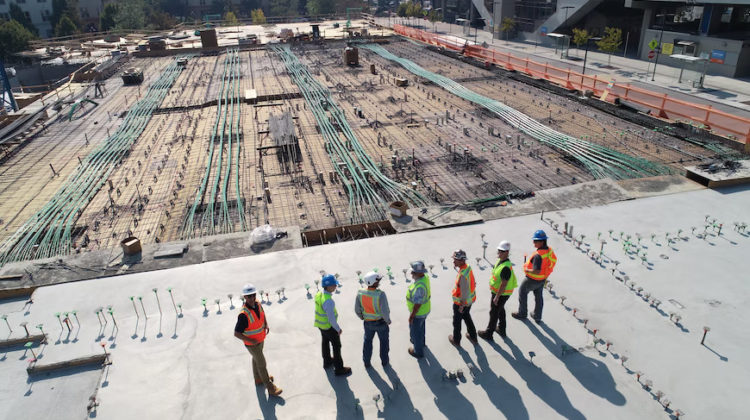
Conceptual Estimate: Understanding Its Significance in Construction Projects
Introduction
In construction projects, accurate cost estimation is critical to its success. It helps the project manager allocate resources, plan the schedule, and identify any potential risks. One of the most crucial cost estimation methods in the construction industry is the conceptual estimate.
A conceptual estimate is a preliminary cost estimate that provides an idea of how much a construction project will cost. It is based on limited information about the project, such as drawings, specifications, and rough sketches. The purpose of a conceptual estimate is to provide an early estimate of the project’s cost so that the owner can decide whether to proceed with the project or not.
In this article, we’ll discuss everything you need to know about conceptual estimate, from its definition, advantages, and disadvantages, to the steps involved in creating one.

What is a Conceptual Estimate?
A conceptual estimate is an initial cost estimate used to determine the feasibility of a construction project. It is created during the planning and design phase, where limited information is available about the project. Conceptual estimates are typically used to estimate the cost of a project before it is fully designed or before a site is selected.
A conceptual estimate is based on the following factors:
- Size and complexity of the project
- Type of construction (new, renovation, or expansion)
- Site location
- Building materials and finishes
- Labor and equipment costs
- Contingency for unforeseen expenses
The accuracy of a conceptual estimate depends on the amount of information available. The greater the level of the information provided, the higher the precision of the estimate. Advantages of a Conceptual Estimate
There are several advantages of a conceptual estimate, including:
1. Early Cost Estimate
A conceptual estimate provides an early cost estimate of a construction project, allowing the owner to make informed decisions about whether to proceed with the project or not.
2. Cost Control
A conceptual estimate helps project managers and owners control the cost of the project by identifying potential cost overruns early on in the project. This enables them to make necessary adjustments before it becomes too late.3. Time-Saving
Creating a conceptual estimate is a time-saving process, as it doesn’t require detailed design or engineering. It provides a ballpark estimate of the project cost in a short period, allowing the project manager to allocate resources and plan the schedule.
4. Better Design Decisions
A conceptual estimate provides a cost estimate before the project’s detailed design phase. It helps the owner and the design team make better decisions on design choices, materials, and finishes.
Disadvantages of a Conceptual Estimate
There are also some disadvantages to conceptual estimates, including:
1. Limited Information
A conceptual estimate is based on limited information about the project, which can result in inaccurate cost estimates.
2. Lack of Detail
A conceptual estimate is not as detailed as other types of estimates, such as the detailed estimate. It may not include all the necessary costs, such as site preparation or infrastructure costs.
3. Cost Variations
A conceptual estimate is subject to cost variations, as it is created based on incomplete information. As the project progresses and more information becomes available, the estimate may need to be revised.
Steps Involved in Creating a Conceptual Estimate
The steps involved in creating a conceptual estimate include:
1. Gather Information
The first step in creating a conceptual estimate is to gather information about the project. This includes drawings, specifications, and rough sketches of the building design, site location, and other relevant information. The greater the level of the information provided, the higher the precision of the estimate.
2. Define the Scope of the Project
Once the information has been gathered, the scope of the project must be defined. This includes determining the size and complexity of the project, the type of construction (new, renovation, or expansion), and the building materials and finishes.
3. Determine the Cost of Labor and Equipment
Next, the cost of labor and equipment must be estimated. This includes the cost of hiring contractors, construction workers, and other professionals, as well as the cost of renting or purchasing equipment and machinery.
4. Factor in Contingencies
It is essential to factor in contingencies for unforeseen expenses, such as weather delays, material shortages, or unexpected site conditions. A contingency is typically added as a percentage of the overall project cost.
5. Calculate the Total Cost
Once all the information has been gathered, the scope of the project defined, and the cost of labor, equipment, and contingencies estimated, the total cost of the project can be calculated. This is the conceptual estimate.
FAQs
1. How accurate is a conceptual estimate?
The accuracy of a conceptual estimate depends on the amount of information available. As the level of detail in the information increases, so does the accuracy of the estimate. However, a conceptual estimate is still a preliminary estimate and subject to change as the project progresses.
2. When is a conceptual estimate used?
A conceptual estimate is typically used during the planning and design phase of a construction project. It provides an early cost estimate of the project to help the owner decide whether to proceed with the project or not.
3. How does a conceptual estimate differ from a detailed estimate?
A conceptual estimate is a preliminary estimate based on limited information about the project. It provides a ballpark estimate of the project cost. A detailed estimate, on the other hand, is a more accurate estimate based on detailed design and engineering plans.
4. Who creates a conceptual estimate?
A conceptual estimate is typically created by a construction project manager or a professional estimator.
Conclusion
In conclusion, a conceptual estimate is an essential tool in the construction industry. It provides an early cost estimate of a project and helps project managers and owners control the cost of the project. Although a conceptual estimate is based on limited information, it still provides a ballpark estimate of the project cost and helps the owner make informed decisions about whether to proceed with the project or not.
When creating a conceptual estimate, it is essential to gather as much information as possible and factor in contingencies for unforeseen expenses. By following the steps outlined in this article, you can create an accurate conceptual estimate that will help you plan and execute your construction project successfully.
If you’re looking for a reliable estimation solution, consider using Bids Estimating, a professional service that can help you create accurate conceptual estimates and plan and execute your construction project successfully.











